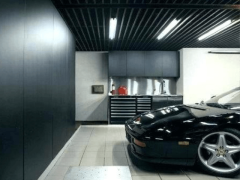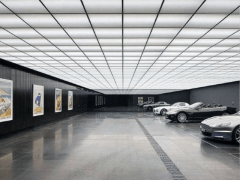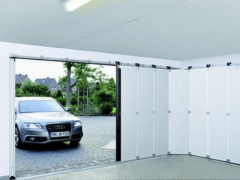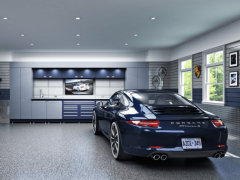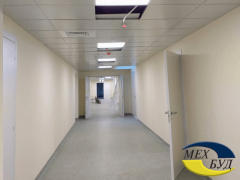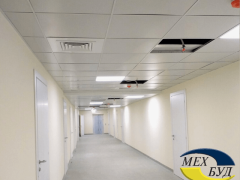- Features of Conditions in Such Spaces
- Key Requirements for Ceiling Structures
- Plaster Ceilings
- Drywall or Plywood Ceilings
- Plastic Ceilings
- Metal Suspended Ceilings
- Ceilings for Warehouses and Logistics Centers
- Ceilings for Industrial Facilities
- Tips for Maintaining Metal Ceilings
- Conclusion for Technical Space Owners
Ceilings for Technical Spaces: Garage, Warehouse, Basement
When planning the finish for a garage, basement, warehouse, or other technical space, it is essential to think ahead about the type of ceiling you will use. Advanced planning helps avoid difficulties during installation and allows you to consider the specific conditions of such spaces, ensuring the selection of the most reliable and durable construction.
Features of Conditions in Such Spaces
When choosing finishes for technical spaces, you should not use the same principles as those for residential and public buildings. It is important to note that garages, basements, and similar areas create specific conditions that affect the performance of most materials.
The most important factors include:
- Humidity Conditions: Even with the most effective waterproofing, the humidity in such a space can be higher than in a residential building. As a result, the materials used in the finish are significantly more susceptible to moisture deformation and corrosion.
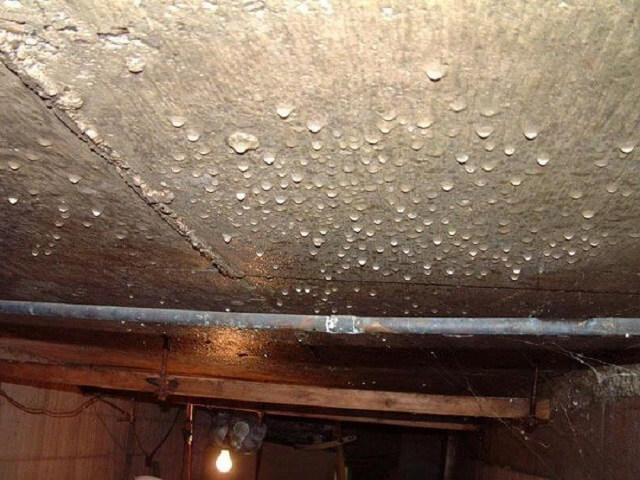
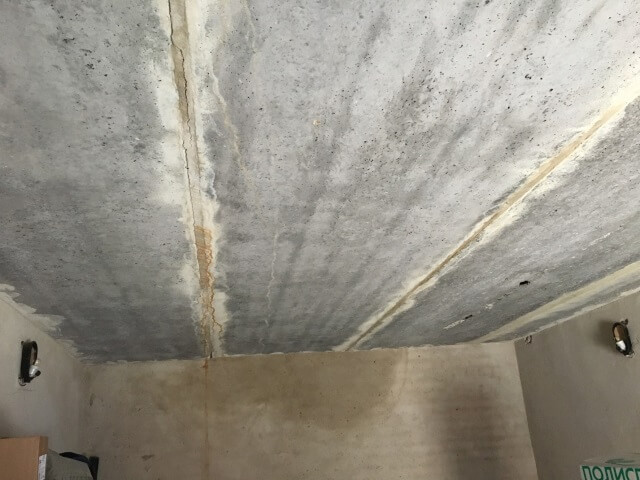
- Operational impacts: This primarily concerns ceilings in garages and large warehouses that are often used as workshops. It is advisable to use materials with maximum durability for finishing, otherwise their service life will be short.
- Limited dimensions: Garages or basements typically have compact sizes. Therefore, when installing a ceiling, it’s important to choose options that allow the ceiling covering to be placed as close to the floor structure as possible. This maximizes the efficient use of the interior space.
Key Requirements for Ceiling Constructions
Given the specific conditions of basements or garages, the following requirements can be formulated for ceiling constructions:
- Mechanical strength: Ensures durability and prevents deformation due to temperature fluctuations.
- Resistance to external factors, particularly corrosion and similar influences: High humidity, presence of gasoline vapors, and combustion products gradually deteriorate many finishing materials, leading to loss of their attractive appearance.
- Biological resistance: It’s crucial to choose materials resistant to bacteria and fungi, as microbial spores can pose health risks over time, even if structural damage is absent.
- Concealed installation of utilities: While optional, hidden installation of air ducts and wiring is preferable. Despite sacrificing some ceiling height, this ensures a neater appearance for garages or basements.
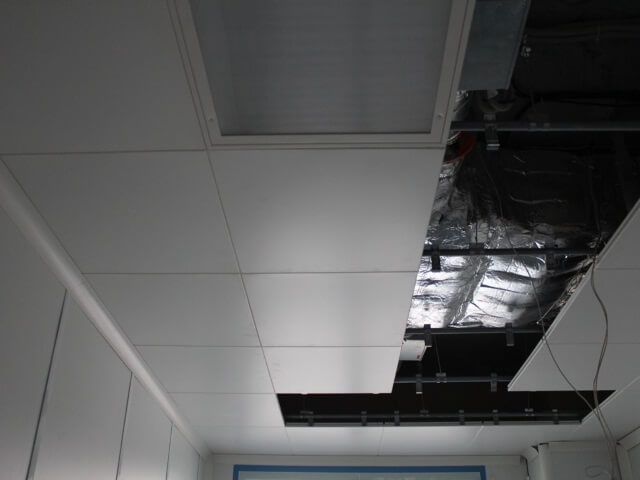
When it comes to appearance, the requirements are minimal for basements, garages, and warehouses. These spaces are not primarily judged by the beauty of their ceilings. However, it’s desirable for the area to look neat, and the ceiling should not require frequent cleaning or maintenance.
Features and Benefits of Major Ceiling Types
Understanding the requirements for ceilings in technical spaces allows us to assess the advantages and disadvantages of the most common ceiling constructions. This section will focus on that.
Plaster Ceilings
Previously the most common method, plastering involves leveling the ceiling with plaster followed by whitewashing or painting. One advantage of this method is that it doesn’t require additional structures to be installed: the ceiling is simply smoothed with plaster and then painted.
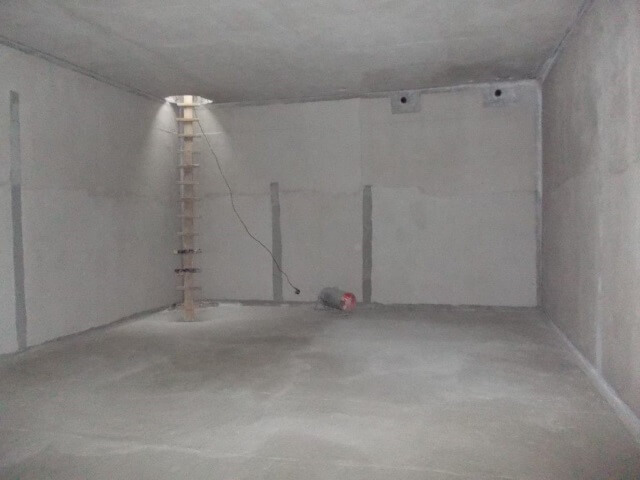
Unfortunately, this solution has several drawbacks:
- Thick Layer Requirement: Achieving a smooth finish often requires applying a thick layer of plaster.
- Structural Weight: The construction becomes heavy, and even minor deformations can cause the ceiling to crack and fall.
- Hygroscopic Nature: Plaster mixes are susceptible to moisture absorption, making them vulnerable to water damage.
- Maintenance Intensive: The surface quickly loses its attractive appearance, necessitating regular upkeep.
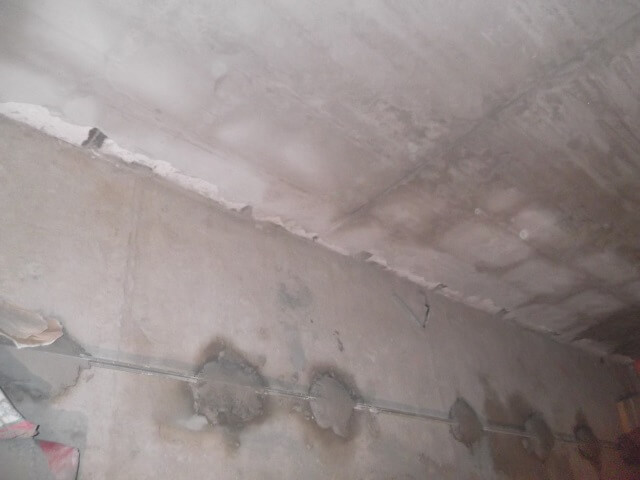
Ceiling from plasterboard or plywood
Another option for ceiling finishing is installing a suspended structure on a metal frame, typically using plywood or plasterboard for cladding.
This option offers several advantages:
- It effectively conceals ceiling imperfections.
- The surface becomes smooth and aesthetically pleasing.
- It allows for the installation of utilities behind the finishing.
This method provides a practical solution for technical spaces like garages, basements, and warehouses, addressing both aesthetic and functional requirements.
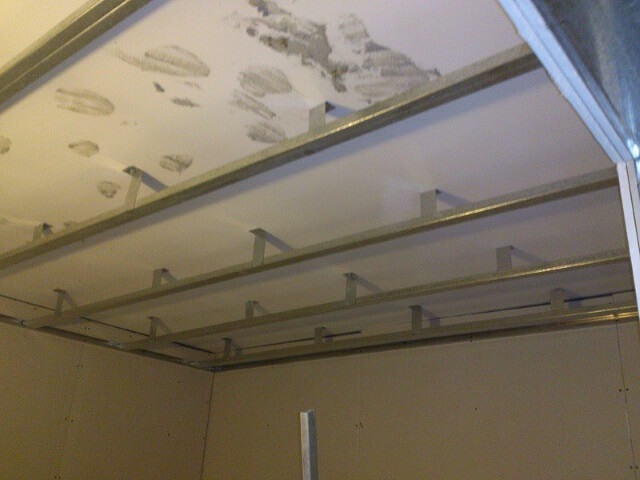
Unfortunately, the option that works well for residential spaces is less suitable for technical areas. Here’s why:
- The main issue is moisture. Even moisture-resistant drywall (GKL) will swell when constantly exposed to a damp environment, not to mention plywood or regular drywall, which are often used for cost-saving purposes. As a result, the false ceiling deforms and loses its appearance within just a year or two after installation.
- Another issue related to moisture is the corrosion of fasteners. The metal screws used to attach plywood or drywall to the base gradually rust. This reduces the fastening strength and causes rusty spots to appear on the finish.
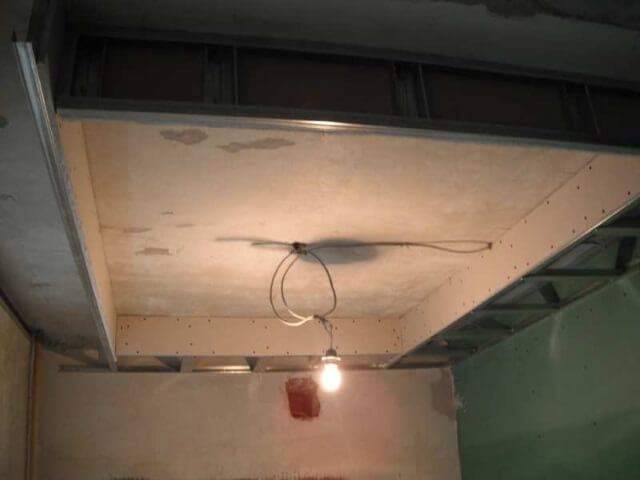
- Also, in technical spaces, plaster filling the joints between panels and decorative compositions do not adhere well. Therefore, they quickly begin to delaminate, requiring ceiling reconstruction.
Plastic Ceilings
An alternative to drywall or plywood in technical spaces is cladding the ceiling with plastic panels. At first glance, PVC seems to be a good choice as it is resistant to moisture, thus preventing surface deformation.
Unfortunately, alongside moisture resistance, plastic ceiling panels have several drawbacks:
- Firstly, PVC, especially cheaper variants, lose their natural color over time. Moreover, if the area is used for any “dirty” tasks (such as automotive engine work in a garage), the surface appearance deteriorates significantly within just a few months after installation.
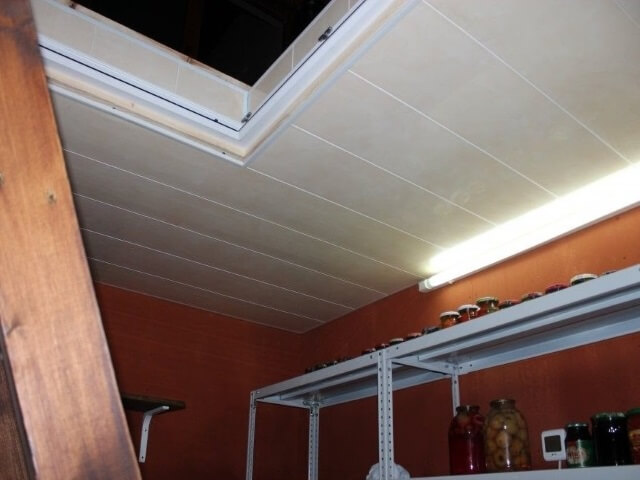
- The second aspect is the low mechanical strength. Any impact can result in dents, cracks, or large holes on the surface. This can become problematic in actively used technical spaces, especially with low ceiling heights.
- Lastly, it is not recommended to use plastic for ceiling and wall finishes in unheated spaces. PVC becomes brittle in cold temperatures and can crack under its own weight or minimal load.
Additionally, plastic, especially cheaper variants, can be flammable. Therefore, using it to conceal wiring is not advisable.
Metal Suspended Ceilings
One solution that experts recommend to avoid the aforementioned issues in basement areas, warehouses, or garages is the installation of metal suspended ceilings. A reliable option for such constructions are metal ceilings from the MehBud factory.

For finishing technical spaces, the most sought-after types of ceilings are:
- Rack: Extended slats can be used for installation in nearly any space, with tightly fitted racks and straightforward installation making this option highly versatile.
- Cassette: Rectangular and square cassettes are an excellent choice for ceiling decor in large areas. They can be installed in garages for multiple cars, expansive basements, warehouses, etc.
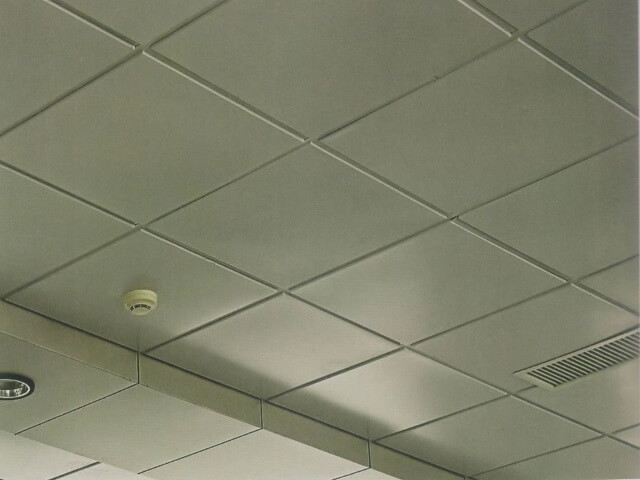
- Cubic-shaped. The unique form of the slats used in these constructions provides the ceiling with an attractive appearance. Therefore, they are installed in places where the room’s aesthetics matter: in corporate garages, operational basements, and other similar facilities.
Metal ceilings for technical spaces offer several advantages:
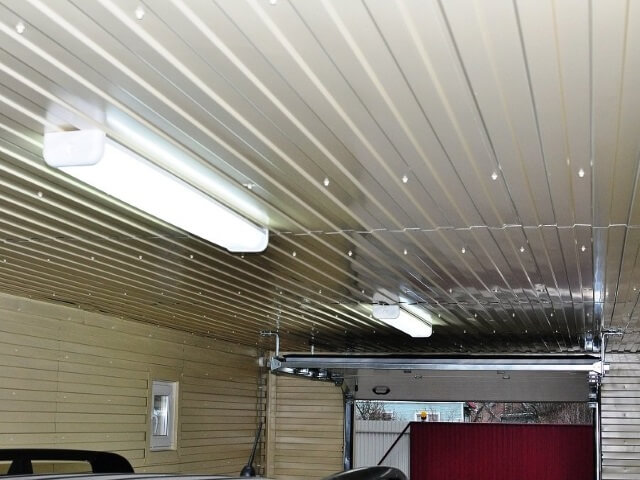
- Mechanical strength, ensured by using sufficiently thick metal.
- Corrosion resistance and resilience to other external impacts (guaranteed by the application of galvanized steel with a reliable polymer coating).
- Technological efficiency that facilitates ceiling installation, repairs, and concealing of utilities hidden behind the false ceiling.
- Attractive appearance (while not a top priority for basements or garages, it still matters!).
- Longevity (over 10 years) without requiring repairs or updates.
However, these ceilings do have drawbacks, with cost being the most significant. On the other hand, considering the strength, reliability, and durability of metal constructions, their installation proves more cost-effective in the medium term compared to seemingly cheaper alternatives.
Ceilings for warehouses and logistics centers
Warehouses and logistics centers, essentially the same as warehouses but with more complex structures and more intensive operational schedules, have distinct characteristics. These include significant floor area and ceiling height, as well as relatively consistent temperature or humidity conditions.

If a warehouse is set up in a leased space, initially it is typically used “as is” — meaning the existing ceiling is simply refurbished. However, for later improvements, the optimal choice would be to install:

Installation of metal suspended structures in warehouse spaces serves several purposes:
- Creating a ceiling covering with sufficient mechanical strength and durability in warehouses or logistics centers.
- Adjusting the ceiling height (if the warehouse is set up in a high-ceilinged hall, lowering the ceiling not only enhances visual appeal but also helps partially reduce heating costs).
- Concealing communications such as ducts and wires.
- Ensuring effective lighting throughout the warehouse area. Ceiling cassettes and panels painted in light tones are used for this purpose, with recessed luminaires or LED panels integrated into the ceiling.
Moreover, such ceilings are highly durable; choosing a quality variety initially can result in minimal maintenance and a lifespan of over 10 years. The modular structure also facilitates repairs and provides access to the ceiling space for working with communications.
Ceilings for manufacturing facilities
In terms of dimensions, manufacturing facilities often rival or exceed warehouses. However, they have significant differences due to operational specifics: ceilings in workshops and other manufacturing spaces accumulate dirt much faster. Therefore, it is strongly recommended to use materials:

- Not highly absorbent, meaning they do not absorb ‘technological pollutants’ such as dust, soot, or oil.
- Sufficiently durable, capable of withstanding periodic cleaning, including the use of aggressive household chemicals.
Among all varieties available on the market, metal suspended ceilings made of galvanized steel or aluminum with a polymer protective and decorative coating (PVDF, polyester) meet these criteria. The smooth texture of the coating and the antistatic characteristics inherent in polymers reduce dirt buildup. And the durability of the composition allows for periodic cleaning of such ceilings.
Regarding construction, for a workshop, installing cassette ceilings made of solid or perforated panels would be optimal.
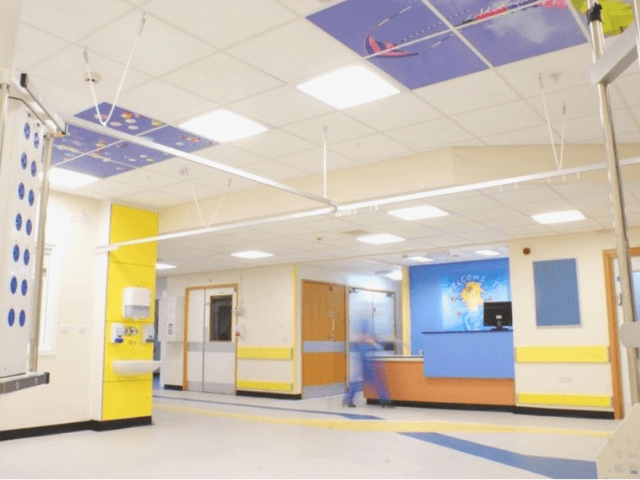
Tips for caring for metal ceilings in technical spaces
Metal ceilings from MechBud offer not only reliability and durability but also ease of maintenance. Here are some simple tips to keep your ceilings in excellent condition:
Easy Cleaning
Metal ceilings are easy to clean and can be done in just a few minutes.
- Dust and light dirt: Use a soft cloth or sponge dampened with soapy water to gently wipe the ceiling surface. Our coatings provide protection against dirt accumulation.
- Heavy soiling: For more stubborn stains, a soft brush and non-abrasive cleaner are sufficient. Avoid harsh brushes and abrasive cleaning agents.
Rust Protection
- Anti-corrosion coatings: Metal ceilings from MechBud are coated with special anti-corrosion treatments that provide additional protection against rust.
Minimal Checks and Repairs
Regularly checking the condition of metal ceilings helps identify and address minor defects promptly.
- Inspection: Conduct a visual inspection of the ceiling every few months for cracks or chips. Our ceilings are designed to be highly resistant to damage.
- Repairs: Small damages can be easily repaired using sealants or paint. For more serious issues, our specialists are always available to assist.
These tips will ensure your metal ceilings in technical spaces maintain their quality and appearance for years to come.
Conclusion for owners of technical spaces
Choosing a ceiling for a basement, garage, or other facility is a challenging task. It is important to consider not only the cost of finishing but also the conditions within the space and its operational characteristics. There is no one-size-fits-all solution, so even metal ceiling panels, which are suitable in most cases, may sometimes be impractical. However, opting for metal ceilings almost guarantees a reliable choice in many scenarios.

